
TOP 5 Heat Sinks TOP 5 Low Profile Heat Sinks TOP 5 Liquid Coolers
Heatsinks by Brand / Mfgr Reviews + Articless Advanced Search
 |
TOP 5 Heat Sinks TOP 5 Low Profile Heat Sinks TOP 5 Liquid Coolers Heatsinks by Brand / Mfgr Reviews + Articless Advanced Search |
Thermolab, makers of the BARAM and BADA heatsinks which Frostytech reviewed here, have posted a neat look at the guts of three common types of copper heatpipe. It's impossible to tell what type of wick a heatpipe uses in your favourite heatsink just by looking at it from the outside. The heatpipe would need to be cut open to find out the answer to that question, and doing so obviously destroy the thermal solution in the process. Instead we offer a rare look at behind the scenes technology which greatly influences thermal performance of modern CPU heatsinks - the heatpipe wick structure. As you probably know, heatpipes are hollow metal tubes that efficiently conduct heat from one location to another. They operate by means of a small amount of working fluid contained in a sealed tube, held under a slight vacuum. The vacuum lowers the boiling point of the working fluid, so relatively small increases in temperature vaporize the liquid which is then naturally drawn towards the colder end of the heatpipe where it condenses back to liquid. An internal wick structure then acts to return the condensed working fluid back to the hot end of the heat pipe, by a force called capillary action. When you put the edge of a paper towel in a small puddle of water, this is the force that soaks up the liquid into the paper. The crux of the situation is that some wick structures are more efficient than others, and some have limitations with respect to orientation and gravity. The three main types used in commercial CPU heatsinks are Sintered metal powder wick, Grooved wick and Metal Mesh wick. Photos are copyright Thermolab, and graciously reproduced with permission on Frostytech. Metal Sintered Powder Wick
Type Heatpipe 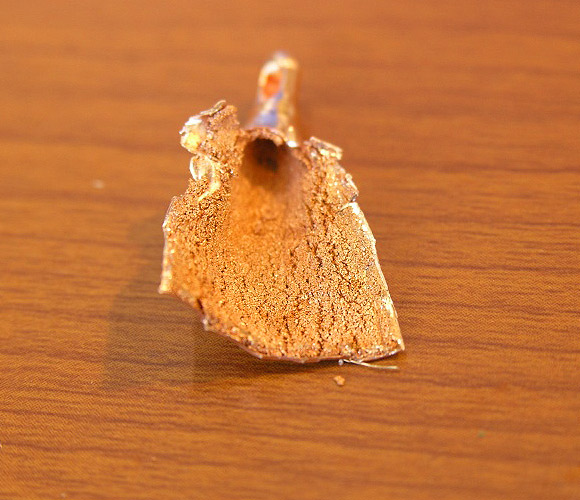 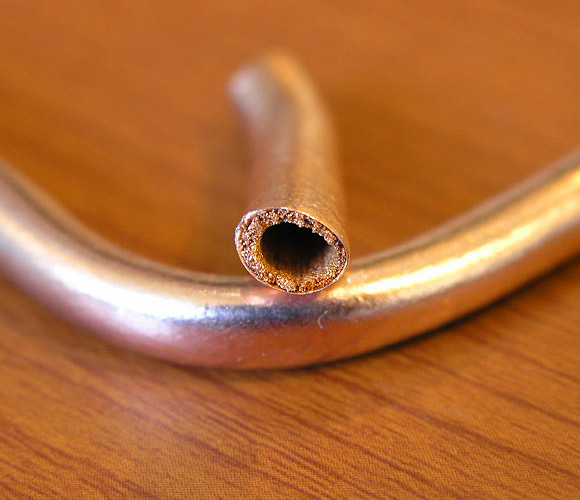 The working fluid in the heatpipe is drawn along the length by the capillary action of the porous sintered copper metal lining the inside of the tube. The sintered copper powder is formed in a bonding process so the material is actually hard (not loose). Manufacturing cost for this type of heatpipe is high. Grooved Wick Type Heatpipe
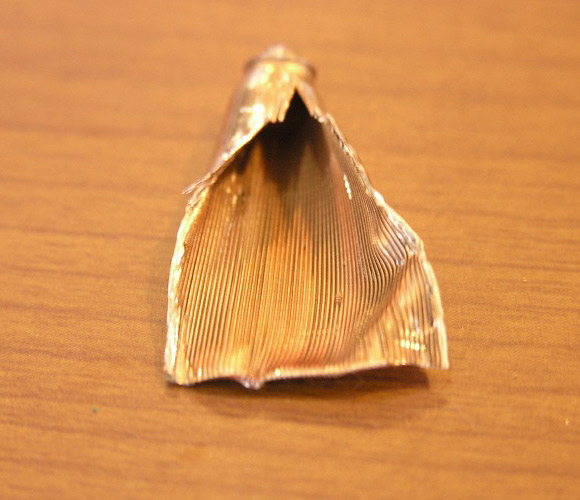 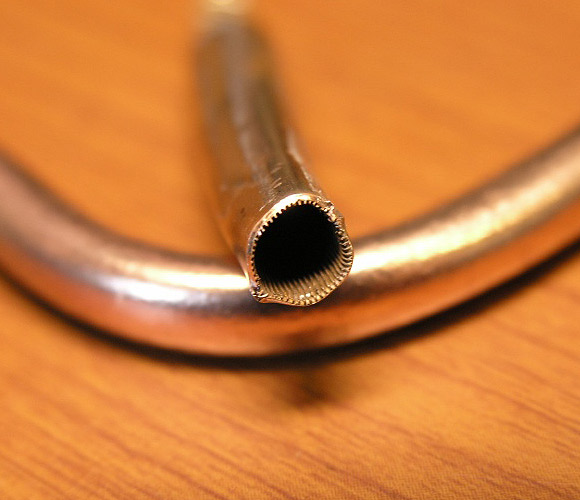 Capillary action is effected by the grooves on the inside of the heatpipe. Depending on the shape of the grooves, there is a difference in performance. Manufacturing costs are low with this type of heatpipe because the grooves are easier to make, however the technique is much more susceptible to gravity and can be orientation specific in use. In general, Thermolab state that vertical orientation is best. Metal Mesh (felt) Wick Type Heatpipe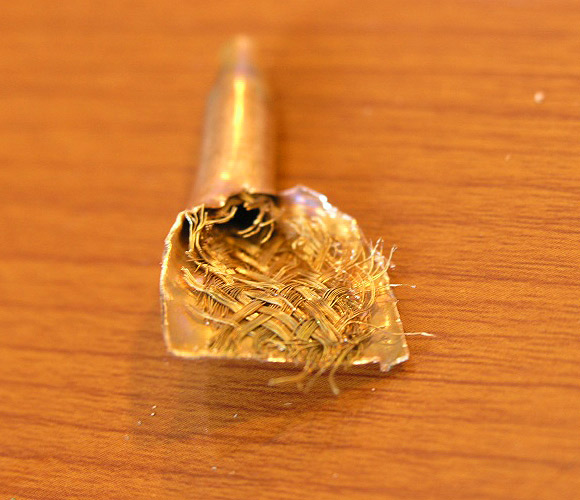 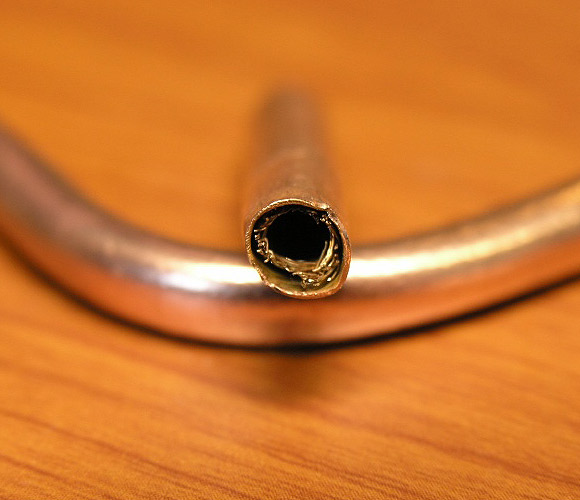 More commonly used with CPU heatsinks is a multi-layered metal mesh wick, as seen here. The few times we have dissected a heatpipe here at Frostytech this is the kind of metal wick structure we discovered. In a freshly cracked open heatpipe the wick would be slightly wet. Related Articles: The Top 5 best heatsinks for low noise and low temperature are ranked here. For more reviews on the latest heatsinks and cooling solutions, rely on FrostyTech's inventory of 400+ heatsink reviews. Here are a few other articles that you might enjoy as well. - Coolermaster
Hyper TX3 Heatsink Review |
|
|||||||||||||||
|
Find a Heatsink . Latest Heatsink Reviews . Top 5 Heatsinks Tested . Top 5 Low Profile Heatsinks . Top 5 Liquid Coolers . Heatsinks by Mfgr / Brand |
Social Media |
FrostyTech.com Info . Feedback . Contact Us / Heatsink Submissions . Submit News . Privacy Policy |
 | |
© Copyright 1999-2025 www.frostytech.com All Rights Reserved. Privacy policy and Terms of Use Images © FrostyTech.com and may not be reproduced without express written permission. Current students and faculty of accredited Universities may use Frostytech images in research papers and thesis, provided each image is attributed. | ||||